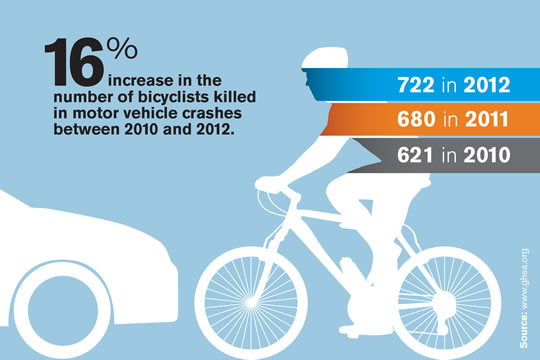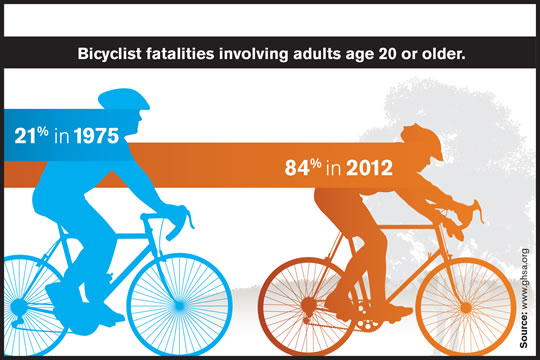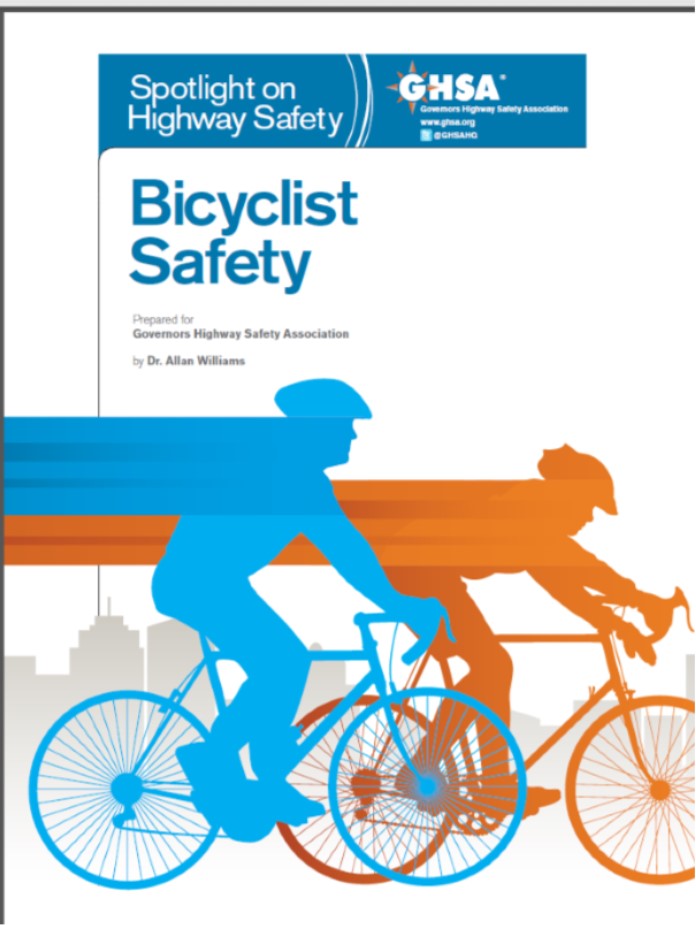Nationwide Bicycle Fatalities Increase; CT Takes Steps to Improve Safety
/The number of bicyclists killed on U.S. roadways is increasing, according to a report by the Governors Highway Safety Association (GHSA). GHSA’s Spotlight on Highway Safety: Bicyclist Safety indicates that yearly bicyclist deaths increased 16 percent between 2010 and 2012, while overall motor vehicle fatalities increased just one percent during the same time period.
While bicyclists killed in motor vehicle crashes increased in 22 states between 2010 and 2012, six states – California, Florida, Illinois, New York, Michigan and Texas – represented 54 percent of all fatalities. In 2012, Florida had the highest proportion of motor vehicle related deaths that were bicyclists (5 percent), followed by California (4.3 percent) and Massachusetts (4.3 percent).
Connecticut, according to the report, had 7 bicyclist deaths in 2010, 8 in 2011 and 4 in 2012. The state was one of 25 states to have the number of fatalities drop from 2011 to 2012.
Bicycling is being used more for commuting, which is affecting the age of accident victims according to the study. In 2012, adults 20 and over comprised 84 percent of bicycle fatalities. That compares to adults making up only 21 percent in 1975. Bicycle fatalities are increasingly an urban phenomenon, accounting for 69 percent of all bicycle fatalities in 2012, compared with 50 percent in 1975.
Until 2010, the number of cyclist fatalities annually had been dropping steadily since 1975 nationwide. The recent increase correlates with a 62 percent surge in bicycle commuting since 2000, according to 2013 Census Bureau data, as governments have promoted cycling as a way to reduce traffic, curb vehicle emissions and improve public health.
"The increase in cyclist fatalities on the road is tragic, but unsurprising, given the growth of the driving population and the number of cars on the road,” said Kelly Kennedy, Executive Director of Bike Walk Connecticut. “Add to that the very real problems of distracted driving, aggressive driving, and street designs that put cyclists and pedestrians at risk. This is why we need complete streets, much better enforcement of speeding, distracted driving, and share the road laws, and the vulnerable user law that Connecticut just enacted."
Earlier this month, the state Department of Transportation (DOT) issued a Complete Streets policy statement, which was praised by Bike Walk Connecticut. The policy expressly promotes safe access for all users by providing a comprehensive, integrated, connected multi-modal network of transportation options. DOT's policy is intended to improve safety and mobility and enhance Connecticut’s economic competitiveness by enabling communities to become livable, walkable, bikeable, drivable, efficient, safe and desirable.
 The new GHSA report indicated that in many states and urban areas, engineering measures are being adopted to accommodate bicycles on the road, “with the dual aim of protecting cyclists from collisions with motor vehicles, while encouraging cycling for its health and environmental benefits.”
The new GHSA report indicated that in many states and urban areas, engineering measures are being adopted to accommodate bicycles on the road, “with the dual aim of protecting cyclists from collisions with motor vehicles, while encouraging cycling for its health and environmental benefits.”
In announcing the new Connecticut policy, DOT Commissioner James Redeker noted that Route 44 in East Hartford will undergo a “road diet” in 2015 to provide bike lanes, enhance vehicular safety and efficiency and improve pedestrian and transit accommodation throughout the corridor. The Department is also outfitting 50 train cars with bike racks on the New Haven Line operating between New Haven to New York City.
In its fifth year before the Connecticut legislature, the Vulnerable User bill passed earlier this year, and took effect on this month (on Oct. 1). The new law requires a fine to be imposed on reckless motor vehicle drivers who cause the death or serious injury of a pedestrian, cyclist, wheelchair user, or other “vulnerable users” who were using reasonable care.
The GHSA report’s author, former Insurance Institute for Highway Safety Chief Scientist Dr. Allan Williams, analyzed current and historical fatality data to develop the bicyclist crash patterns.





























